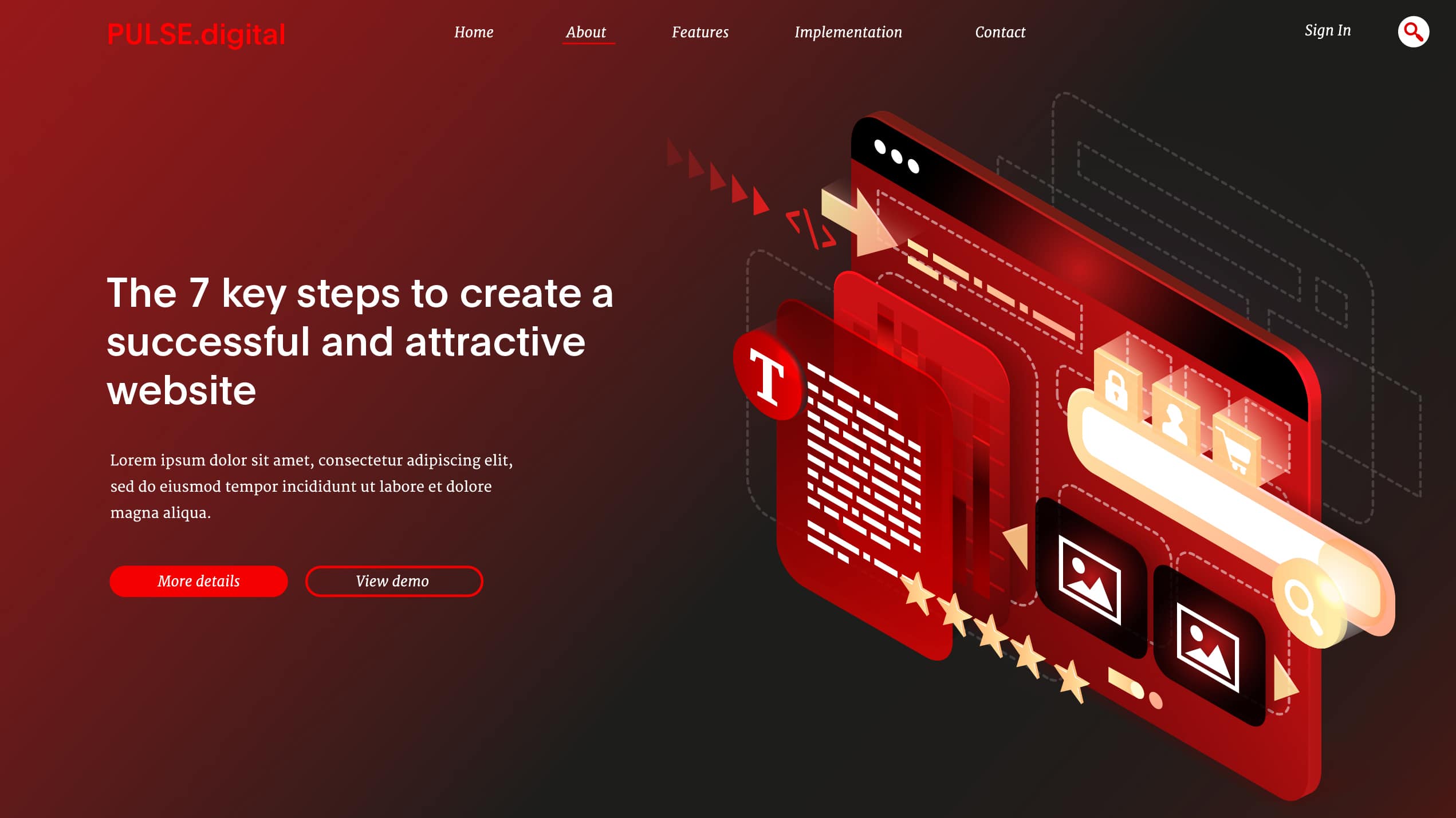14/04/2023
7 key steps to creating a successful and attractive website
In today’s digital world, having an effective and attractive website is essential to the success of your business. A well-designed website allows you to stand out from the competition, attract new customers and retain your existing ones. In this article, we outline the 7 key steps to creating a website that converts and generates enquiries.

1. Define objectives and target audience
The first step is to define the objectives of your website and identify your target audience. What is the main purpose of your website? Do you want to sell products, offer services or simply inform your visitors?
Also think about the needs and expectations of your target audience in order to better tailor your site and improve their online experience.
2. Plan the structure and content
Once you have defined your objectives and target audience, you should now plan the structure and content of your website. Create a clear and intuitive information architecture, ensuring that visitors can easily navigate and find the information they are looking for.
Also think about the different types of content you want to offer: blog posts, videos, infographics, etc. Keep in mind that the content should be of high quality and informative in order to keep your users on your site and make them want to contact you.
3. Choose an attractive and responsive design
The design of your website is crucial in capturing the attention of your visitors and encouraging them to stay on your site. Choose a design that is attractive, modern and adapted to your sector of activity.
Don’t forget that your website must also be responsive, i.e. it must adapt to different types of screens (computers, smartphones, tablets) to offer an optimal user experience. For your information, in 2023, more than 60% of web browsing will be done from smartphones.
4. Optimise natural referencing (SEO)
In order for your website to be visible on search engines and attract traffic, it is essential to optimise its SEO. This includes technical aspects such as loading speed, image optimisation and site architecture, as well as content-related aspects such as using relevant keywords, writing catchy meta descriptions and creating internal and external links to name but a few.
If you are interested in learning more about this topic, we invite you to visit the page Improve your organic referencing on Google.
5. Improve the user experience (UX Design)
A good user experience is essential to encourage visitors to stay on your site and take actions, such as filling in a contact form or purchasing a product.
Work on ease of navigation, clarity of information, speed of page loading and effective CTA (Call To Action). Remember to test your website regularly on different devices to detect any problems and resolve them quickly.
If you have a website, but are not satisfied with its user experience, find out more right here: UI/UX design for web and mobile.
6. Set up analysis tools
In order to measure the performance of your website and identify areas and pages that need improvement, it is important to install analytics tools, such as Google Analytics. These tools allow you to track key data such as visitor numbers, visit duration, conversion rates and traffic sources.
By analysing this data, you can adjust your strategy to optimise your results. Through these different figures, many ideas for solutions may appear before your eyes.
7. Promote your website
Once your website is created and optimised, it is time to promote it. Use social networks, email marketing, online advertising campaigns such as Google Ads and local SEO to drive traffic to your site.
Don’t hesitate to share quality content regularly and interact with your audience to create a loyal and engaged community around your brand.
A website published online is a bit like a new shop in a town. You exist, but now you need to make sure you are known.
For these reasons, we suggest you read this detailed article on Google Ads campaigns and their benefits: Paid search – Google campaign.
Conclusion
Creating a successful and attractive website takes time, expertise and constant monitoring to ensure that it remains up-to-date and, above all, competitive. By following these 7 key steps, you are well on your way to developing your online presence and attracting new customers.
However, these tips are just the tip of the iceberg. By working with our web agency, you’ll benefit from the expertise of experienced professionals who can guide you through each step of the process and implement strategies that are tailored to your business.
If you’re ready to transform your website and unlock its full potential, get in touch with us today. Our team of specialists are here to help you create the website you’ve always wanted and take your business to new heights.
More News



Who is the chicken and the egg between UI and UX Design?
Let’s start with the basics. UX stands for User eXperience and UI stands for User Interface. Now that this is established, we can see what these terms clearly mean and ho…





The digital illustration, not only beautiful but also optimal to attract prospects and customers
It’s time to pay attention. At the beginning of the 21st century, the visual sense is particularly solicited, whether it is paper or screen information, images are everyw…